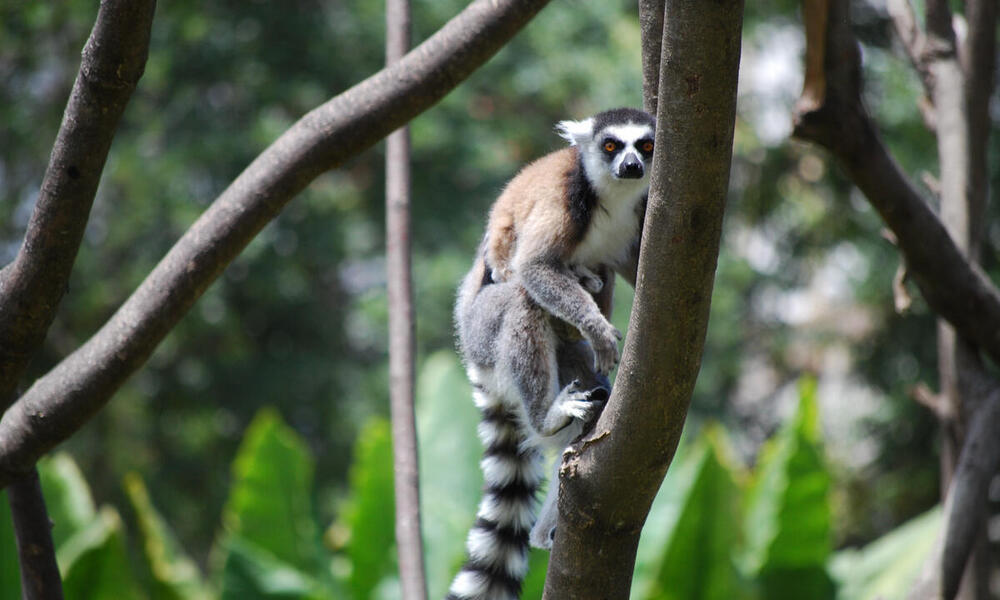Madagascar is a global biodiversity hotspot and home to unique animal species that can only be found on the island. Ninety-eight percent of mammals, 91% of reptiles, and 80% of plants do not occur anywhere else in the world. The ring-tailed lemur and Verreaux’s sifaka, also known as the “dancing lemur,” are two of the 107 lemur species that live in Madagascar. However, 96% of lemur species, or 103 out of 107 species, are facing extinction due to habitat loss from the routine clearing of forests for wood charcoal, firewood, and subsistence farming, as well as being taken from the wild for the illegal pet trade. In southwestern Madagascar, WWF is working with communities to protect lemurs in the community-managed Amoron’i Onilahy Protected Area by keeping habitat intact for lemurs and the people who rely on the forest for survival.
Protecting spiny forests and the wildlife that live there
Amoron’i Onilahy is a key refuge system for lemurs and serves as an important wildlife corridor between the southern and northern spiny forests. These unique forests are found nowhere else in the world and provide an important habitat for ring-tailed lemurs and Verreaux’s sifakas. Many of the plants in this arid environment have impressive water-conserving qualities due to their spines, hence the name “spiny forest.” These spines developed as an adaptation to droughts in the area and help the plants to reduce water loss and avoid being eaten.
WWF works closely with communities to protect these species and habitat in Amoron’i Onilahy —one of the last strongholds for ring-tailed lemurs and Verreaux’s sifakas. Local community patrollers, known as polisin’ala, help monitor and protect lemurs and their forests in six sites across the protected area. The polisin’ala also work alongside local communities and ecologists, as well as students from several universities to monitor lemur population trends, behavior, and habitat quality, and to build scientific capacity to protect wildlife. As a result of these monitoring measures, there has been a 60% decrease in the deforestation rate in 2020 compared to 2019 in the Amoron’i Onilahy and an increase in lemur density from 2019 to 2022. The increased lemur density results from adult lemurs moving into Amoron’i Onilahy because it offers a protected space and enough resources to support additional lemurs.
Overall, WWF has trained close to 200 patrollers on patrol reporting, awareness, and communication strategies, with 30 trained in 2023. Now, smartphone technology is creating huge advances in our conservation efforts and allows the polisin’ala to use their phones to document and track lemur populations. A standardized community-based monitoring system using the Spatial Monitoring and Reporting Tool (SMART) has strengthened the capacity for better long-term monitoring of lemur populations.

